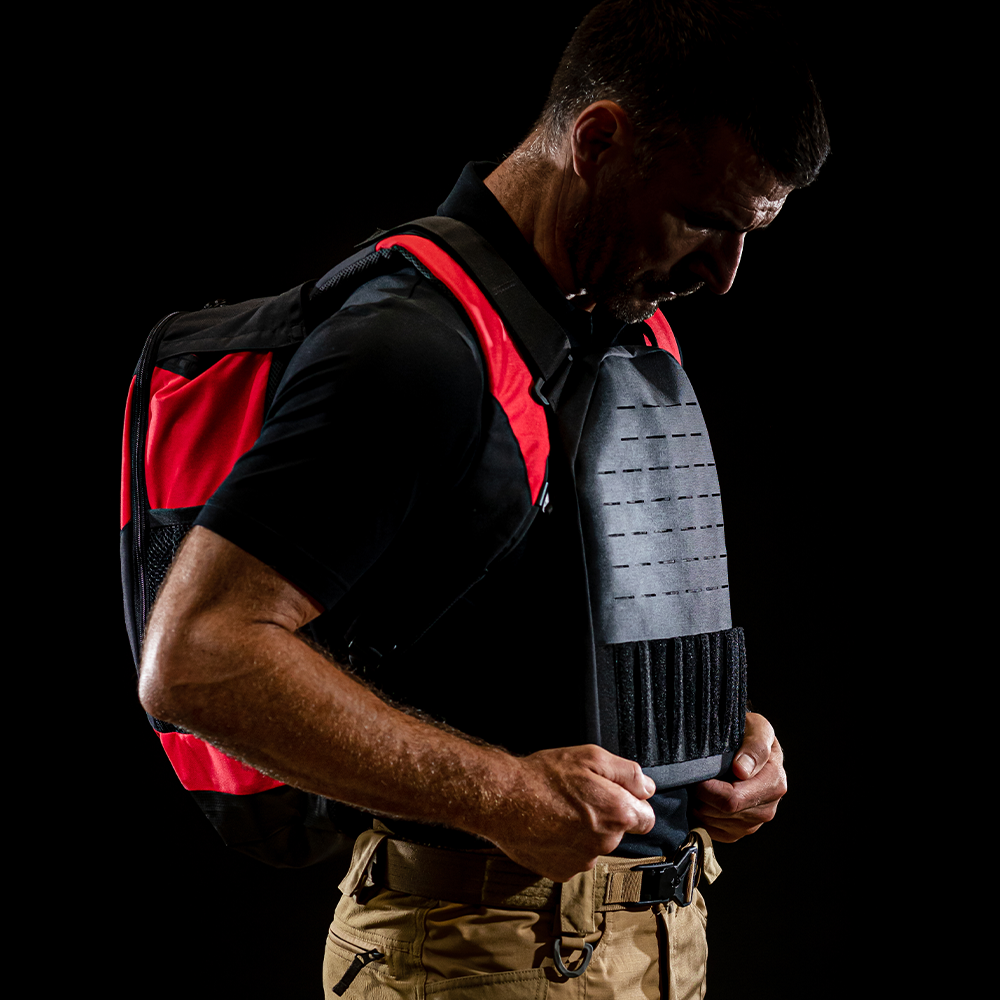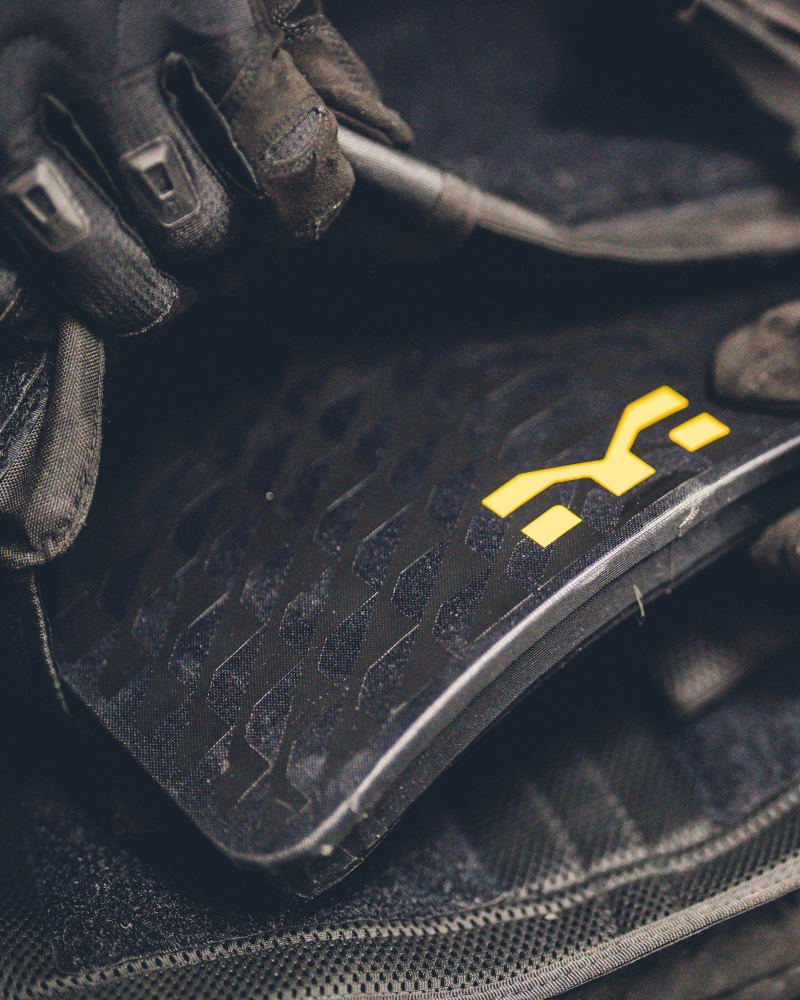
Ballistic protection for military aircrafts – challenges and solutions
Military helicopters are essential platforms for transport, reconnaissance and combat operations. At the same time, their light armour and often low flight altitudes make them particularly vulnerable to ballistic threats.
While standards such as STANAG 4569 exist for land vehicles, this is far from the case when it comes to protection systems for aircraft. Furthermore, protection solutions must comply with the strict certification requirements set by the European Union Aviation Safety Agency (EASA) or else by national aviation authorities.
Threats to military helicopters
In addition to classic air-to-air threats in the form of enemy helicopters or fighter jets, military helicopters face a variety of ground-based threats such as air defence systems. Even small arms pose a serious threat, especially during take-off and landing, due to the short distances involved.
Kinetic energy threats (KE threats)
The greatest danger comes from small arms, machine guns and light cannons. The following are particularly hazardous:
- 7.62 mm to 12.7 mm calibre – often used against low-flying helicopters.
- 14.5 mm to 23 mm calibre – constitutes a greater threat in asymmetric warfare.
- Anti-aircraft guns with a calibre of up to 30 mm – primarily used by conventional armed forces.
Since helicopters cannot be fully armoured, any protective measures taken usually focus on critical areas such as the cockpit and cabin.
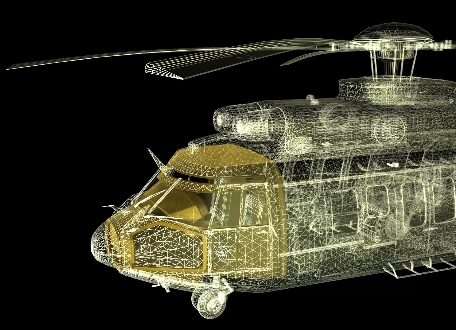
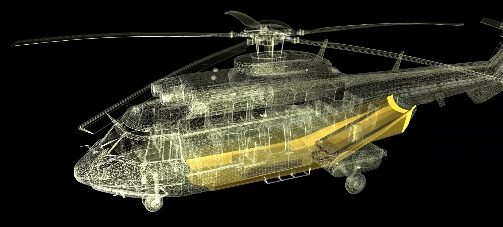
Man-portable air-defence systems (MANPADS)
Alongside ballistic threats, man-portable air-defence systems (MANPADS) such as the FIM-92 Stinger or 9K38 Igla pose a major threat. These weapons track helicopters through their heat signature and can target vulnerable areas such as the engine.
Countermeasures:
- Infrared decoys (flares)
- Directional Infrared Counter Measures (DIRCM) to distract heat-seeking missiles
Airburst rounds
Fired by modern 40 mm cannons, for example, airburst ammunition is particularly effective against airborne targets.
Airburst rounds explode prior to hitting a target, releasing dozens of tungsten sub-projectiles over a wide area. This ammunition can render helicopters, light aircraft and even fighter jets inactive. The further away the round explodes from the target, the larger the area covered by the tungsten sub-projectiles.
Drones
Drones also pose a serious threat to helicopters. A helicopter is virtually unprotected against a first-person view (FPV) drone equipped with a warhead, especially during static manoeuvres such as the transfer of special forces units.
Specific features of aircraft protection systems
Strict aviation standards and EASA certification
All protection solutions must be certified before they can be used. EASA and national aviation authorities in particular place high demands on the materials used and how they are integrated. The installed systems must not impair the flight characteristics of the aircraft. A huge amount of effort is involved in the verification and documentation for the corresponding approvals. While EASA sets out the certification of civil aircraft, such as those used by the police, national standards – that are no less extensive in scope – apply to military aircraft as a separate process.
Especially lightweight protection solutions
Since weight plays a critical role, only ultra-light materials are used for the protection of helicopters. In addition to fibre composites, ceramic composites are used due to their very low areal density.
Protection for critical components
As it is not feasible to equip aircraft with full armour, common practice is to provide targeted protection in those areas that are essential for the survival of the system as a whole and that will prevent the aircraft from crashing.
Protection for pilot and co-pilot
The protection of the pilots is essential and has the highest priority in the design of helicopter armour, as the incapacitation of the pilots would cause the system as a whole to fail and the aircraft to crash.
A combination of side protection, floor armour and additional systems on the seats is used to give the pilots a suitable level of protection.
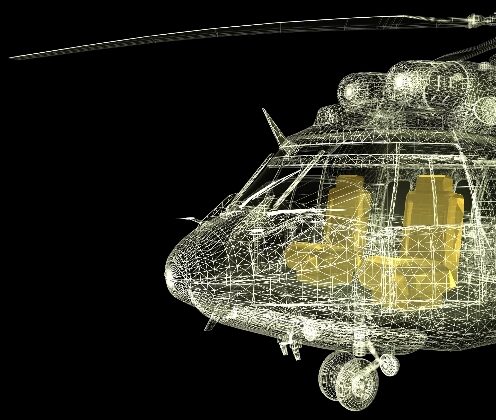
Cabin protection – for cargo and troop transporters
Transport helicopters play a central role in troop relocation and evacuation. Such vehicles need to protect both their pilots and passengers – which comes with its own unique challenges. Protective measures for the cabin range from protective panels on the sides to floor armour and armoured seats. These measures can significantly improve the survival rate of troops in the helicopter without unduly affecting the aircraft’s manoeuvrability.
Test procedures for ballistic components in aviation
There is no consolidated standard that sets out the ballistic test criteria for aircraft protection systems.
Instead, ballistic protection measures are often assessed according to the National Institute of Justice (NIJ) or the Association of Test Laboratories for Attack-Resistant Materials and Constructions (VPAM). STANAG 4569 can also be applied for this purpose.
The altitude of the aircraft results in a much greater distance between the attacker and the system. This can be taken into account in the qualification process for the protection system by adapting the test distances accordingly.
Summary
Ballistic protection for military helicopters is a unique challenge, because any system has to protect against KE threats such as machine gun fire while remaining extremely lightweight.
Unlike land vehicles, helicopters are not subject to universal standards such as STANAG 4569. Instead, protection solutions are often based on NIJ or VPAM assessments. Compliance with EASA certification standards is an additional challenge, as protection systems cannot jeopardise flight performance.
Cargo and troop transporters in particular benefit from targeted protection in the cabin to better protect occupants from flak and fragments. Otherwise, the top priority is to protect the pilot and co-pilot.
The combination of lightweight composite materials, modular protection concepts and targeted protection for the cockpit and cabin allows for the maximum achievable survivability. In combination with active countermeasures such as infrared decoys and DIRCM systems, military helicopters can be optimally protected in modern mission scenarios.
Despite all the progress made in this arena, ballistic protection for helicopters remains a complex trade-off between safety, weight and flight characteristics – and an ongoing challenge for engineers and armed forces.
Mehler Protection meets this challenge through continuous system validation, established partnerships and a focus on research and development.
Images and graphics: Mehler Protection, Mehler Engineered Defence GmbH (All rights reserved, 2025)
